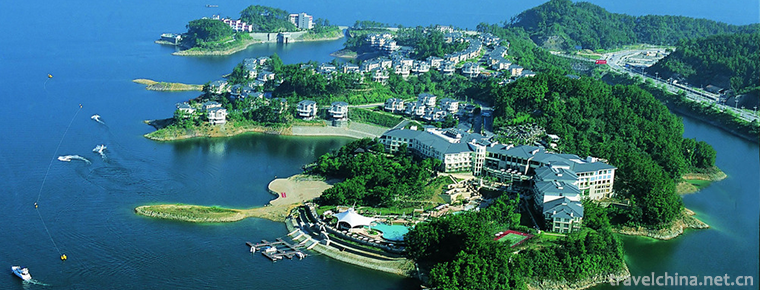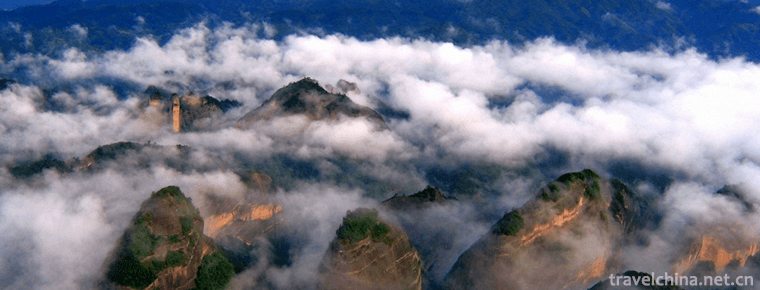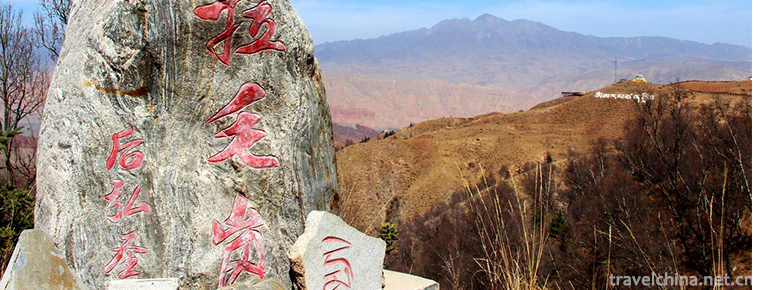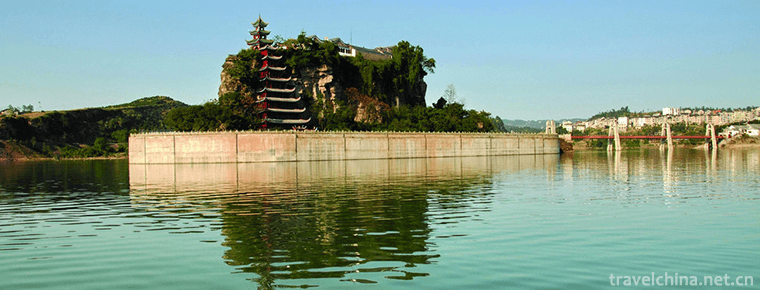Bayanbulak Grassland
Bayinbrook grassland: formerly known as Yuledus grassland, Zhuledus grassland, Yuludus grassland, because it is mainly located in Xinjiang Bayinguoling Mongolian Autonomous Prefecture and the northwest of Jingxian Bayinbrook area, also known as Bayinbrook grassland, in the Yuledus River Basin.
It is an alpine basin in the middle part of the Tianshan Mountains, surrounded by snow mountains, with an altitude of about 2500 meters and an area of 23835 square kilometers. It is the second largest grassland in China, second only to the Ordos grassland in Inner Mongolia. Bayinbrook Mongolian means "abundant spring". The grassland is flat with abundant water and grass. It is a typical grassland meadow grassland and one of the most important animal husbandry bases in Xinjiang. There are not only the paradise surrounded by snowy mountains, but also the Kaidu River with nine curves and eighteen curves, and the Swan Lake is more elegant and charming.
During the Ming and early Qing Dynasties, the Yuledusi River Basin was mainly a nomadic zone in the Lihui region of Moxi Mongolia. In the thirty-ninth year of the Qianlong reign of the Qing Dynasty (1774), Turhut Mongolia, headed by Ouabasi, was settled.
position
The Bayinbrook Grassland is located in the Intermountain basin in the northwest of Bayinguoling Mongolian Autonomous Prefecture, Jingxian County and the central Tianshan Mountains of Xinjiang Uygur Autonomous Region, China, surrounded by snow mountains. Starting from Hejing County, it is directly accessible along National Highway 217. The grassland of Bayinbrook (formerly called Urudus or Pearl River) means "an inexhaustible spring" in Mongolian (Turkic means "the Star Plain").
Bayinbrook Grassland is not only the second largest grassland in China, but also the largest alpine grassland in China.
The Bayanbrooke Grassland, located at the southern foot of Tianshan Mountains, is not very convenient for transportation, and the road conditions are mostly bumpy and rugged. Because of this, after crossing the snow-capped mountains and experiencing the fatigue of the journey, the vast green carpet that suddenly appears in front of us gives us a sense of sudden enlightenment like a peach blossom.
scale
The Bayinbrook Grassland is 363 kilometers away from Korla City. It is composed of two high mountain basins and hilly grasslands. The grassland is 270 kilometers long in East and west, 136 kilometers wide in South and north. The total area of the grassland is 23835 square kilometers. The available grassland area is 20519 square kilometers. The average elevation is between 1500 meters and 2500 meters. It is the second largest grassland in China after Ordos in Inner Mongolia.
The mountains around the Bayinbrook grassland are all over 3000 meters above sea level. It is typical alpine grassland, alpine meadow grassland, Alpine marsh grassland and mountain meadow grassland. The vast grassland is like a huge green carpet, covering the whole land.
geology
Bayinbrook grassland is a typical grassland meadow grassland with flat terrain and abundant water and grass. It is also one of the most important animal husbandry bases in Xinjiang.
The Bayinbrook Grassland is located in the Intermountain basin of the Tianshan uplift belt and belongs to the Mesozoic Intermountain depression. The basin floor is covered by Quaternary sediments. It is a natural scenic spot integrating mountains, basins and grasslands.
The main source of water supply in grassland is the mixture of snow-ice dissolved water and rainfall. In some areas, groundwater recharge has formed a large number of swamp grasslands and lakes. There are 13 springs, 7 lakes and 20 rivers in the Bayinbrook Grassland.
The magnificent Erbin grassland stretches 170 kilometers to the West and 50 kilometers to the north and south, dividing the Bayinbrook grassland into two basins. More than a thousand eyesprings distribute throughout the grassland and converge with the trickle of melting ice and snow to form the mother river of Bazhou, Kaidu River. The ancient Kaidu River crosses between the two basins, forming large and small Oxbow lakes and swampy wetlands on the grasslands. Kaidu River moistens the grassland and breeds generations of life on the grassland.
Scenic spots
Swan Lake Nature Reserve
The famous Swan Lake is situated on the grassland, about 60 kilometers southwest of Bayin Township, Bayin Brook District Government, Hejing County, Xinjiang. Swan Lake is actually a large swamp consisting of many small lakes in series. It is the first Swan Nature Reserve in China. The reserve is rich in water and grass, with a humid climate and beautiful scenery. There are 128 species of birds, belonging to 14 orders, 30 families and 80 genera, of which 53 species are Passeriformes and 75 species are non-Passeriformes; 95 species are breeding birds, accounting for 74%, of which 34 species are reserved birds, which inhabit the largest wild swan population in China and is the habitat for bird breeding and summer crossing. There are more than 20 species of mammals, including 2 species of amphibians and 5 species of fish. Among them, 8 species belong to the first category of national protection, such as snow leopard, black stork, golden sculpture, white shoulder sculpture, and 25 species belong to the second class protection, such as swan, pan sheep, snow chicken, etc.
Swan Lake Nature Reserve is a mountain and basin scenic tourist area integrating nature reserve and natural landscape. In 1980, the Bayinbrook Swan Nature Reserve was established with the approval of the People's Government of Xinjiang Uygur Autonomous Region. In 1986, it was approved by the State Council as a national wildlife type nature reserve.
In the early morning, when the distant yurts curled up smoke, swans of all sizes began to rest, some began to look for food, and some swans of all sizes spread their wings across the lake, flew over horseback, sheep and yurts, and circled in the distant valleys. When the sun rises, the reflection of the snow mountain becomes clearer gradually. Wild ducks, larks, larks and other water birds set off a lively "bird song chorus" on the lake, and the number of swans resting is increasing. Swans sleep in a remarkable position, with their necks under their wings, or lying on the ground, or standing on one leg in the grass, or floating on the water. Evening is the peak time for swans to forage. At this time, swans are dancing in the lake exquisite "water ballet". Sometimes they stand upside down and reach almost vertically into the water. Sometimes they catch drifting stalks and rotate their necks. Sometimes they crouch in the grass to search for tender leaves. Swan's long neck gives it an elegant body. When looking for food, its neck can bend and twist arbitrarily, drawing a smooth arc.
Generally speaking, there are four kinds of swans in China, three of which are big swans, small swans and wart nose swans. Nearly 10,000 swans live in Swan Lake Nature Reserve in Bayinbrook Grassland for 8 months. It is the largest habitat and provenance of Chinese swans. It has five characteristics: a large number of species, a concentrated habitat, rapid growth and development, and a long residence period.
In addition, the number of geese and ducks is also very large, accounting for one third of the national geese and ducks. Among 128 species of birds in the nature reserve, the white-tailed sea sculpture and reed warbler are newly discovered in Xinjiang, and the dark-bellied Snowcock is a newly discovered subspecies in China. There are 26 species of birds under national protection.
Nine winding and eighteen bending Tongtian River
There are 13 springs, 7 lakes and 20 rivers in the Bayinbrook Grassland. Kaidu River winding on the grassland is known as "Nine Curves and Eighteen Bends". In Journey to the West, one of China's four famous works, Kaidu River also has a well-known name - Tongtian River. It is said that Tang Monk's "Sunshine Island" is located in Hejing County, full of mystery. The national famous Bayinbrook Swan Lake Reserve is located in the alpine Basin in the upper reaches of the river. In China, the tail of the river is Bosten Lake, the largest inland freshwater lake in China.
Kaidu River is one of the major rivers in Xinjiang, and it is also a famous inland river. The river basin includes Hejing, Heshuo, Yanqi, Bohu and other counties. The Kaidu River is about 610 kilometers long, with an area of 22,000 square kilometers, a total drop of 1,750 meters, and an average annual runoff of 3.362 billion cubic meters. Kaidu River belongs to the river with small sediment, especially the upper valley is open, the slope is small, and the natural good grassland vegetation makes the upper sediment smaller than the lower, so it is an excellent irrigation and industrial water resources.
The Kaidu River, which is more than 40 meters wide, twists and turns on the flat and vast grassland, like the tears of the Bayinbrook grassland, pure and without any pretension, quietly nourishes the land .
Quick Wusu Stone Forest
Located in the western part of the Tianshan Mountains and under the Kuiku Usudaban Banner at the northern foot of the Narati Mountains, the stone forest area is 3,500 meters above sea level, 9 kilometers long, 5 kilometers wide and 30 meters high. Stone forest is like forest and non-forest. It is a long-term sculpture of semi-gelatinous conglomerate strata through external forces. It has become various and strange. There are "European castles" in the stone forest. It is solemn and solemn, with "sword out of sheath", piercing the sky, with "pedestrians and animals", or lying or lying down.
Hottensala Falls
Starting from the Bayinbrook grassland in Xinjiang, we rode through the Kuiku Usu Stone Forest and then traveled for another thirty or forty kilometers to reach the Haotengsala Gorge, which is high in the mountains and deep in the clouds. In this valley, which is less than 10 kilometers long and less than half kilometers wide, the Haotengsala Plateau Waterfall, known as "Snow Mountain Silver Exercise", plunges down a cliff with a drop of about 30 meters and falls into a deep pool, where silver splashes and mists are filled with thunder and thunder. Haotengsala Falls is 3200 meters above sea level, with a top width of 6-7 meters and a bottom width of 15 meters. The scenery around the waterfall varies with the seasons. In the early spring of winter, the waterfall is surrounded by snow-covered, silver-coated and ice-covered, which is a crystal world; in midsummer, the waterfall is surrounded by green pines and cypresses with lush flowers and sweet fragrance; the rainbow is scattered, the rainbow is in the sky, the mountains are bright and the waters are beautiful, fresh and pleasant.
Thin strip of sky
A skyline of green hills
Gallop the horse
When it comes to grasslands, many people will immediately sketch a scene of ethnic warriors galloping on horseback, golden eagles with huge wings casting shadows in the air, lonely Obo in the wilderness, and carpet houses rising with smoke in the dusk. Indeed, riding on the grassland must be an indispensable project. How free and easy it is to walk or gallop on a BMW in the grassland and let the gentle wind caress your face or feel the speed on your horse's back.
The most proud thing on the grassland is the "Turhut's Wings" - Yanqi Horse. The Yanqi horse, tall and strong in stature, with good temperament and endurance, is the closest friend and the most vigorous rider of the Turhut people.
Riding horses here can experience different feelings of horse riding in the flat, hilly and mountainous areas at the same time. Many of the pastures here offer horses for rent to visitors. Like to stimulate the choice of a good running Mongolian horse, childlike innocence can choose white Qianli horse; couples together riding horse grassland to watch the sunset, is really a deep-seated memory.
Alxan Hot Spring
"Alxian" means "holy water" in Mongolian, which is suitable for those who come to bathe and treat diseases. Alxian hot spring water is the surface water immersed in the crustal plate fissures and overflowed after the geocentric heating. Alxian hot spring is widely distributed, has many holes, high water temperature, sweet water quality, contains a variety of minerals and trace elements, and is famous for its high curative effect of medical health care in Xinjiang. The average temperature of hot spring water is between 43 and 63 degrees. The water from some hot spring holes can be directly used to soak Chinese herbal medicines or make tea. The effluent from each spring hole has different medical effects.
Alxian Valley has beautiful scenery, glaciers hanging down, waterfalls falling, purple vapor transpiration, clouds and mists covering, spruce standing in the valley, alpine meadow flat, growing Dangshen, Fritillaria and other valuable medicinal materials. The ancient rocks in the hot spring area are carved with strange-shaped gods, each of which has a beautiful story.
Gonness Forest Park
Gongnaisi Forest Park is located in Hejing County, Bayinguoling Prefecture, Xinjiang. It is the site of Gongnaisi Forest in the upper reaches of Gongnaisi River. Unlike the grassland "wind blows grass, cattle and sheep see less" scene, here is a mountain full of pine trees and wild flowers. Gongnais has four distinct seasons. Every season has its distinct features. Spring is full of new green, summer flowers are blooming, autumn frost is red leaves, winter silver is wrapped, and it is a good summer resort and tourist destination. Before it rains, the clouds and waterfalls here are very magnificent, and you can personally feel what is the image of "swallowing thousands of miles".
Barinbrook's "Three Treasures"
Bayin Brook has three treasures: Tianshan yak, Chatten sheep and Yanqi horse.
The Tianshan Yak of Bayinbrook, originated in the Qinghai-Tibet Plateau, was introduced and developed from Tibet by the fifth generation of Qinhuo Fodobutong Chemin. Yaks are called "plateau boats" because of their strong physique, cold resistance and hard work.
Chatten Big Tail Sheep is famous for its meat fat. It is a unique breed in Bayinbrook grassland. It is said that this large-tailed sheep with white body and black and yellow one-headed is the result of crossbreeding and domestication between the Euro-Russian sheep breed brought back by Turhut and the local sheep breed when it returned to the east.
The most proud thing on the grassland is the "Turhut's Wings" - Yanqi Horse. The Yanqi horse, tall and strong in stature, with good temperament and endurance, is the closest friend and the most vigorous rider of the Turhut people.
Tourist guide
time
The best time to travel is September.
Pneumatic holidays on grasslands are relatively low, so we should pay attention to cold prevention. Even in July, August and September in summer, thick quilts should be covered during night rest.
traffic
The Bayin Brook District Government is located in Hejing County, where there are buses every other day.
To the Bayinbrook Grassland, you can take a bus from Urumqi, turn along the Uyi Highway to Duku Highway, and drive more than 460 kilometers to Hejing County.
Or take a train from Turpan to Hejingxian, Xinjiang, and then travel more than 300 kilometers westward along the rugged mountain road from Hejingxian to enter the Bayinbrook Grassland.
Board and lodging
In terms of accommodation, there are guest houses and hotels in Bayinbrook and tent hostels in the grasslands for accommodation. There are also private hotels nearby. In addition, the Korla Bayin Hotel, located in the center of Bayinbrook Town, is also a popular choice for many tourists. It is only 3 kilometers away from Bayinbrook Grassland and can reach the Bayinbrook Grassland in 10 minutes by bus. The hotel is equipped with a large Muslim restaurant, which can accommodate 200 people. It can provide local specialty catering.
In terms of diet, grassland cuisine has Xinjiang characteristics of roast whole sheep, milk tea, roast mutton, and so on.
Matters needing attention
1. The temperature on the grassland is low. We should pay attention to cold prevention. Even in July, August and September in summer, we should cover thick quilts during night rest.
2. Swan Lake is a grassland wetland marsh. Don't be greedy to see swans get too close and fall into the marsh. It's better to ask the local guide for guidance.
3. Pay special attention to the safety of grassland fire.
4. Respect the local people's national and religious traditions and habits.
5. Those who are in poor condition along the Yining-Narati line, worn-out vehicles, carsick or easily ill should have psychological preparation and preventive measures.














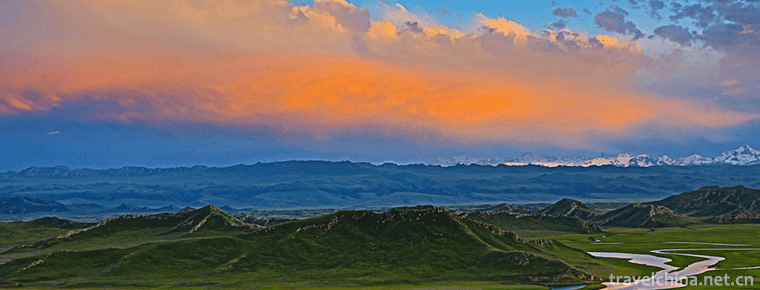
-
Thousand Islet Lake Qiandaohu Scenic Area
Qiandaohu Scenic Area, also known as Xin'anjiang Reservoir, is located in Chun'an County, Hangzhou City, Zhejiang Province..
Views: 190 Time 2018-12-07 -
Lang Mountain Scenic Area
Langshan is located in the northwest side of the hinterland of the Yuechengling Mountains, which is the longest in Wuling Mountains. It spans Xinning County and Resource County.
Views: 210 Time 2018-12-12 -
Yellow River Grand Canyon
The Yellow River Grand Canyon is located in Qingtongxia Town, Wuzhong City, Ningxia. It is 20 kilometers away from Wuzhong City. It is a scenic spot of the Yellow River Canyon composed .
Views: 158 Time 2019-01-18 -
Shi Bao Village
Shibaozhai, a national AAAA-level tourist attraction, a national key cultural relic protection unit, is one of the 30 best new tourist landscapes in the Three Gorges of the Yangtze River,.
Views: 96 Time 2019-02-08 -
The Story of Barragan
Stories of witty figures of the Mongolian people in China. Long-term spread in Inner Mongolia, Xinjiang and other Mongolian areas. The protagonist Balagan Cang is the representative of the working peo.
Views: 230 Time 2019-04-02 -
Legend of Liu Bowen
Liu Bowen's legend is based on the traditional folk oral literature of Liu Ji, a historical figure, spread throughout the whole country in eastern Zhejiang, with Qingtian, Wencheng and other southern .
Views: 363 Time 2019-05-13 -
Tajik Eagle Dance
Tajik Eagle Dance, a folk traditional dance in Tashkurgan Tajik Autonomous County of Xinjiang Uygur Autonomous Region, is one of the national intangible cultural heritage..
Views: 235 Time 2019-06-17 -
Yihuanghe Bar Dance
Hebang dance is popular in Hedong area of Yihuang County, Jiangxi Province. It is a kind of traditional folk dance developed by mountain people from generation to generation, chopping branches on the .
Views: 250 Time 2019-07-12 -
Bamboo Paper Making Skills
Bamboo paper production maintains a complete traditional process. It is manually made by dipping paper. There are 15 links and 72 processes from material selection to paper making. The production proc.
Views: 201 Time 2019-08-10 -
Beijing University Of Agriculture
The predecessor of Beijing University of Agriculture, Tongxian agricultural school, Hebei, was founded in 1956. In 1958, Tongxian agricultural school in Hebei province was merged with Beijing agricult.
Views: 323 Time 2019-09-06 -
Rongxian Gaoshiti Forest Park
The landform of Gaoshiti Forest Park is peculiar, with boulders, odd peaks, valleys and streams forming a typical natural landscape of low mountain landform in southern Sichuan. Gaoshiti Forest Park covers a total area of 182.13 hectares. It was approved as a provincial forest park by the provincial forestry department in 1993..
Views: 170 Time 2020-10-15 -
Yibin scenic spot
South Sichuan Bamboo Sea is a national AAAA tourist attraction, covering an area of 120 square kilometers and a core scenic area of 44 square kilometers. There are eight main scenic areas, two major scenic spots and 134 scenic spots. In 2009, it was se.
Views: 362 Time 2020-12-18
